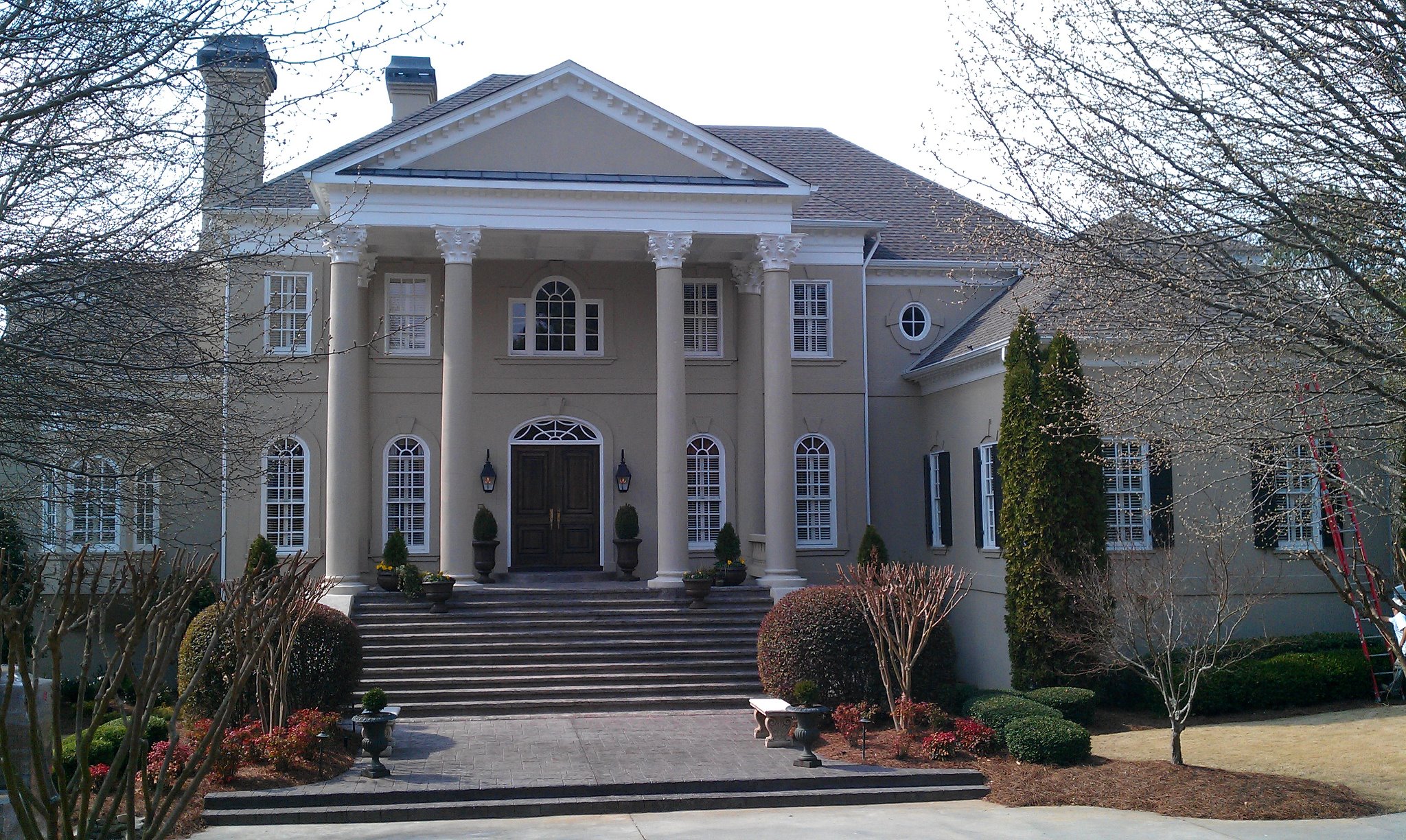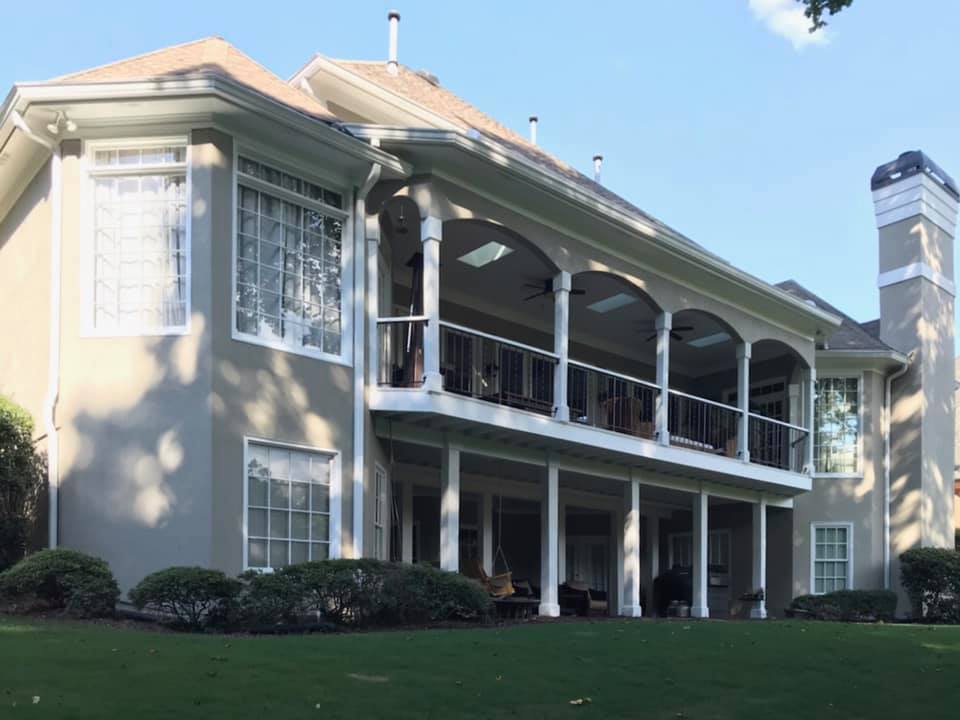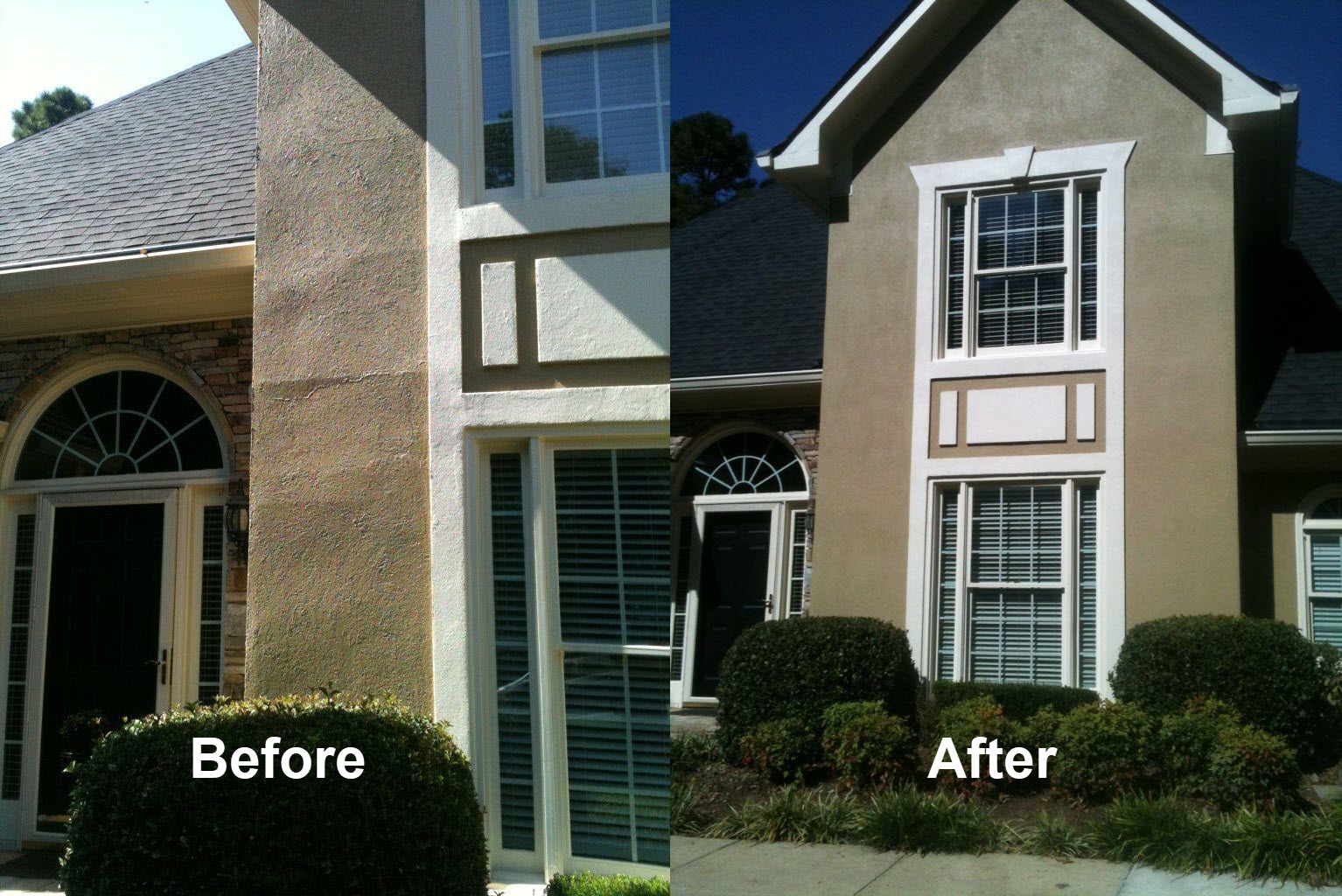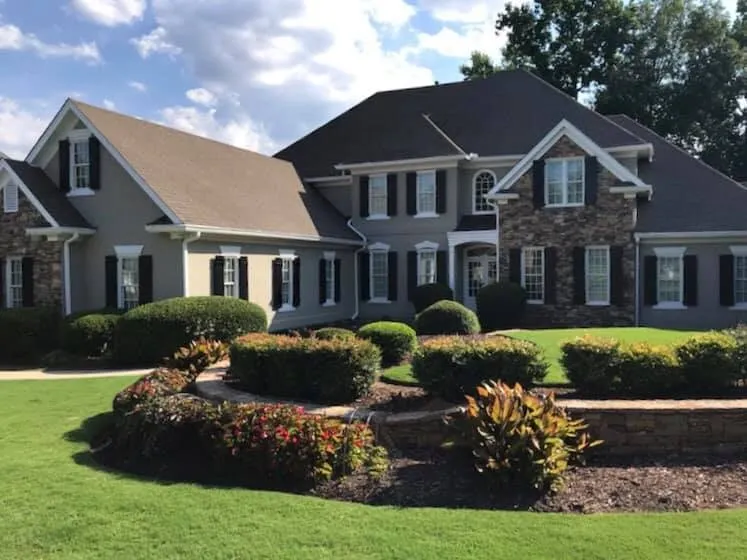EIFS Exterior Finish Systemin Ball Ground GA
Exterior Finishes That Blend Style with Function
We Are Locally Owned & Operated For Over 24 Years
We Serve Businesses In And Around The Following Cities:
About Eifs Exterior Finish Systems in Ball Ground, Georgia
Understanding the EIFS Exterior Finish System: Installation and Repair of Stucco, EIFS, and Dryvit in Ball Ground, Georgia
The Essence of EIFS: Overview and Importance
The EIFS (Exterior Insulation and Finish System) or synthetic stucco has revolutionized the world of building exteriors, offering an energy-efficient, aesthetically pleasing solution. Especially in Ball Ground, Georgia—a location known for its historical charm and evolving landscape—employing superior exterior systems is vital to maintain the architectural integrity and appeal of residential and commercial properties alike. EIFS provides thermal insulation, moisture control, and an array of stylistic choices that make it a preferred option for property owners looking to enhance both form and function.
As buildings become more intricate in design, so does the need for advanced solutions like EIFS. This system, known for its flexibility, adaptable design, and energy-saving benefits, holds significant importance. However, effective installation and repair are crucial to realizing its full potential. This is where expertise from providers like Advanced Stucco Repair comes into play, ensuring that both the aesthetic appeal and functionality of your property in Ball Ground, Georgia are optimized.
The Process of EIFS Installation: Crafting Durable Exteriors
The installation of EIFS is a meticulous process that begins with an understanding of the underlying structural needs and the desired aesthetic outcome. For residential and commercial buildings in Ball Ground, assessing these requirements ensures that the installation not only enhances the exterior appeal but also contributes to the energy efficiency of the structure.
EIFS installation involves several key steps. Initially, a durable adhesive is applied directly to the substrate, securing the insulation board. This step is critical as it forms the basis of the EIFS system, ensuring it remains anchored to the structure. Following this, a base coat is applied over the insulation to provide a seamless surface. This base coat typically includes a fiberglass mesh to add flexibility and resistance to impacts, which is vital in areas prone to weather fluctuations.
After the base coat dries, a finish coat is applied. This final layer defines the structure's aesthetics, allowing property owners to choose from various textures and colors that complement the architectural style of Ball Ground's scenic environment. The entire installation is overseen by Advanced Stucco Repair to ensure precision and longevity, adapting the EIFS to the specific climatic and structural demands of the region.
Benefits of EIFS Systems: Beyond Aesthetics
The appeal of EIFS lies not only in its aesthetic flexibility but also in its functional benefits. One of the most significant advantages is its superior insulation properties. By reducing thermal bridging, EIFS effectively minimizes heat loss, which is particularly beneficial in Ball Ground, where seasonal changes can impact heating and cooling requirements. This improved thermal performance translates into reduced energy costs and a more sustainable building, aligning with increasing environmental consciousness among property owners.
In addition to energy efficiency, EIFS offers enhanced moisture control. Traditional stucco can suffer from moisture penetration leading to deterioration, but EIFS incorporates a drainage system that channels water away from the underlying structure. This feature is invaluable in preventing water damage, ensuring the long-term durability of the cladding.
The lightweight nature of EIFS also reduces stress on the building’s structure, which can be particularly advantageous for older properties in Ball Ground that require careful attention to avoid structural stress. Advanced Stucco Repair emphasizes these benefits, offering tailored EIFS installations that ensure property owners enjoy both immediate and long-lasting advantages.
Repair and Maintenance: Ensuring Longevity of EIFS
Despite its durability and resilience, EIFS systems require periodic maintenance to maintain their optimal condition. In Ball Ground, where climate variations can impact building materials, addressing any damage or wear promptly is crucial to preserve the integrity of the EIFS cladding. Proper repair and maintenance involve identifying and fixing cracks, delaminated areas, and any signs of water infiltration.
Repair processes typically commence with a thorough inspection to assess the extent of any damage. Advanced Stucco Repair's specialists use their expertise to identify underlying issues and recommend suitable solutions. They employ advanced materials and techniques to restore the EIFS to its original condition, ensuring the repairs blend seamlessly with the existing structure.
Moreover, routine cleaning and upkeep are essential in preventing issues such as mold growth or surface staining, which can affect the system's aesthetic. Property owners in Ball Ground are encouraged to partner with experienced professionals like Advanced Stucco Repair to schedule regular maintenance protocols, thus safeguarding their EIFS over time.
Real-World Applications: Enhanced Property Value and Aesthetic Appeal
In the realm of real estate, the visual allure of a property significantly influences its market value and attractiveness to potential buyers or tenants. By opting for EIFS installations and repairs, property owners in Ball Ground, Georgia, can enhance both the visual appeal and energy efficiency of their buildings, achieving a significant boost in property value.
Commercial properties, in particular, can leverage the versatility of EIFS to create distinctive brand facades that capture the attention of customers, thereby playing a crucial role in brand positioning and recognition. Residential properties, on the other hand, benefit from a façade that not only looks modern but also contributes to a comfortable indoor climate.
Advanced Stucco Repair has numerous success stories in Ball Ground, showcasing properties that have substantially benefited from EIFS installations. These projects not only highlight the aesthetic transformation but also the increased durability and value addition that comes with a professionally installed EIFS. Real-world applications emphasize how property owners can achieve stunning results with expert intervention, reinforcing the importance of skilled professionals in mastering the nuances of EIFS.
Choosing Advanced Stucco Repair: Expertise and Unmatched Service
Advanced Stucco Repair brings a wealth of experience and a portfolio rich with successful EIFS projects within Ball Ground, Georgia. Their expertise in both installation and maintenance ensures that properties not only achieve immediate aesthetic enhancements but also long-term performance benefits. Engaging their services means opting for quality craftsmanship, tailored solutions, and responsive customer service, vital for the longevity and appeal of your property’s exterior.
Their commitment to quality and understanding of local conditions make them an invaluable partner for any EIFS-related project. Whether you seek to refurbish an aging façade or install new EIFS to uplift your property’s aesthetic, Advanced Stucco Repair offers solutions that align with your vision and budgetary goals, ensuring a return on investment through enhanced property value and energy savings.
By choosing Advanced Stucco Repair, property owners can rest assured that their investments will be handled with professionalism and attention to detail, providing peace of mind and stunning results. Their projects in Ball Ground are testaments to the enduring beauty and efficiency that EIFS can bring to a building when backed by experienced hands.
In conclusion, the EIFS exterior finish system represents a comprehensive approach to exterior cladding, integrating aesthetics, energy efficiency, and property value enhancement. For property owners in Ball Ground, Georgia, partnering with a skilled professional like Advanced Stucco Repair can transform how their properties interact with both the environment and occupants, ensuring continued satisfaction and enduring beauty. By investing in quality materials, expert installation, and timely maintenance, the long-term benefits of EIFS become manifest, guiding owners to make informed, impactful decisions for their buildings.
Eifs Exterior Finish Systems Gallery



Call Us Today to receive your Free Quote for
Eifs Exterior Finish System in Ball Ground
Serving: Ball Ground, Georgia

About Ball Ground, Georgia
The area that encompasses Ball Ground was originally inhabited by both the Cherokee and the Muscogee Creek, until the Battle of Taliwa, which took place in what later became Ball Ground in 1755, between the Cherokee and the Muscogee Creek, ending with a Cherokee victory and forcing the Creek out of the territory.
Following the passing of the Indian Removal Act in 1830, the Cherokee were slowly relocated out of Cherokee County, including the Ball Ground area. The area of Ball Ground and the surrounding Cherokee County was distributed to European-Americans via the 1832 Georgia Land Lotteries, though the lands were not settled by them until the 1835 Treaty of New Echota caused the Cherokee to fully leave North Georgia and relocate west of the Mississippi River as part of the Cherokee removal out of North Georgia.
The name Ball Ground was initially given by settlers to refer to an area of land, not for the town or community. Native Americans would use the area as a ballground to play a game similar to town ball, and settlers named the town Ball Ground in reference to this. Over time details were added to the story of why the town was named Ball Ground. One such story was that the site was so named because it was the location of a 1532 game of ball between Native Americans playing against Hernando de Soto and his men, in a game umpired by the owner of the Fountain of Youth. When a fight broke out during the game, the umpire was killed, taking the secret of the location of the Fountain of Youth with him. Another story attested as "local folklore" by the Cherokee County Chamber of Commerce says that the site is named Ball Ground because of a game of stickball played between the Cherokee and Creek "for the prize of a thousand square miles of land".
After acquisition from the Cherokee in the 1830s, Ball Ground was originally settled as farmland and had few people living in the area. By 1847, the Ball Ground area had a post office, which was one of ten post offices within Cherokee County. In 1882, just before the town was established, Ball Ground had six homes and two country stores.
Meetings were held in 1875 in various areas including Ball Ground to discuss the possibility of a railroad being built through Ball Ground and other nearby areas. In 1881 work began on a railroad to Ball Ground using chain gangs for labor and grading on the railroad's path was completed in Ball Ground that same year. The resulting track was part of the Marietta and North Georgia Railroad and was completed in 1882. Upon completion the terminus of the railroad was the newly constructed depot in Ball Ground.
A town was built around the Ball Ground depot using surrounding land that was donated by thirteen nearby landowners for the express purpose of establishing a town. The deed of transfer to the railroad company noted that “The consideration moving each of us in the establishing of this town is the enhanced value to our lands within and adjacent to the said town, and the general benefit to the country, by which we shall be benefited.” The donated land was split into 200 lots and sold via an auction held in Ball Ground on April 18, 1883, along with other additional properties including a 65 acres (26 ha; 0.102 sq mi) farm and a nearby mill. The next year in 1884, the town had approximately 300 residents.
Ball Ground was incorporated as a town by town charter on September 27, 1883, by an act of the Georgia General Assembly. The town limits were set as "one half mile in every direction from the present railroad crossing on the Gilmer Ferry road; that it shall be known and distinguished as the town of Ball Ground."
In January 1896 a judge approved the sale of the Marietta and North Georgia railroad to the Atlanta, Knoxville, and Northern railway due to nonpayment of loans by the former railroad. The property to be sold included the depots along the railroad route which included the Ball Ground depot. The plaintiffs in the case were those owed money by the railroad and gave loans that were taken out to charter the railroad, but the scheduled April 1896 sale of the railroad was subsequently delayed through the courts by order of the same judge that initially approved the sale. That same month the Marietta and North Georgia railroad missed their payment deadline and the sale moved forward. On November 1, 1896, the Marietta and North Georgia Railroad was purchased by and turned over to the Atlanta, Knoxville, and Northern railway. Atlanta, Knoxville, and Northern was sold to the Louisville and Nashville Railroad in 1902.
An amendment to the town's charter was passed in 1903 to change the election times, clarifying the issuance of liquor licenses and set a price for said license at "not less than $500". The amendment also clarified how ad valorem taxes were to be collected. A further amendment in 1905 changed the 1903 amendment's $500 liquor license fee to $5,000. An updated charter passed by an act of the Georgia General Assembly in 1911 greatly expanded the powers of the municipal government, including the ability to pass municipal ordinances, and established a school district within Ball Ground.
In 1961 a Ball Ground Improvement Association was formed to add improvements to the city including new paint, a city park, and street lights.
A television documentary aired in December 1971 on North Georgia's Channel 11 that focused on the city of Ball Ground and described it as a city in decline, and interviewed Ball Grounders about "the slow deterioration of the town." Two weeks after the broadcast of the documentary, the city's merchants announced that they had organized the Ball Ground Merchants Association to promote trade and to function as a Chamber of Commerce for the city.
The Ball Ground Community Association was formed in early 1972 to promote the town and to organize festivals and cultural events. The first event the association organized was the May 1972 spring festival and parade, which included a delegation from the Cherokee Nation. This marked the first time the Cherokee returned to the area in any official capacity since they were removed from the area during the 1830s. As part of the festival, two Cherokee teams played a game of stickball against one another, and then-Lieutenant Governor Lester Maddox served as the parade's grand marshal. Later that year in November 1972, in part because of the festival and other improvements to the city, Ball Ground won the "1972 Stay & See Georgia" contest, which was a program designed to help highlight and expand tourism within the State of Georgia. The spring festival was held annually until 1989.
In 1997 developers began building new homes and communities within Ball Ground. Because of the growth of the city, residents and city officials began discussing the need for an improved sewer system to help modernize the septic systems of older homes and to attract new growth for the city.
In 1998 a plan was put in place to begin work on a $2.8 million sewage system. The sewage system was completed in Fall 2003 amid ongoing development in and around Ball Ground.
Ball Ground is located at the foothills of the North Georgia mountains in the northeastern portion of Cherokee County. The city is 4.7 mi (7.6 km) northeast of the city of Canton and 0.4 mi (0.64 km) south of Nelson. It is the northernmost city in Cherokee County that is fully within the county limits, as the city of Nelson is partially within Pickens County. Ball Ground is 37.9 mi (61 km) north of Georgia's capital city of Atlanta's northernmost city limits and 48.7 mi (78 km) from downtown Atlanta.
Ball Ground lies within the Upper Piedmont Physiographic Province in a narrow band of land called the Hightower-Jasper Ridge District, which has a different land structure and lithology than the surrounding areas. The bedrock underneath the city consists of igneous and metamorphic rocks such as gneiss and schist. The land in and around Ball Ground is rich in marble deposits as well as talc, pyrite, and gold.
According to the United States Census Bureau as of 2020, Ball Ground has a total area of 6.3 sq mi (16 km), of which 0.04 sq mi (0.10 km), or 0.63%, is water. The city's elevation averages around 1,100 ft (340 m) above sea level, ranging from just over 1,000 ft (300 m) in the valleys to around 1,200 ft (370 m) on several hilltops within the city. Unlike most other parts of Cherokee County, Ball Ground is not in a floodplain and has no typically flood prone areas. To protect the water and surrounding lands, the city government has ordinances in place for stream buffer protection, watershed protection, and wetland protection.
The climate of Ball Ground, as with most of the southeastern United States, is humid subtropical (Cfa) according to the Köppen classification, with four seasons including hot, humid summers and cool winters. July and August are generally the warmest months of the year with an average high of around 85 °F (29 °C). The coldest month is January which has an average high of around 48 °F (9 °C).
Ball Ground receives rainfall distributed fairly evenly throughout the year as typical of southeastern U.S. cities, with March on average having the highest average precipitation at 5.15 in (131 mm), and May typically being the driest month with 3.81 in (97 mm).
| Census | Pop. | Note | %± |
|---|---|---|---|
| 1890 | 296 | — | |
| 1900 | 302 | 2.0% | |
| 1910 | 443 | 46.7% | |
| 1920 | 809 | 82.6% | |
| 1930 | 706 | −12.7% | |
| 1940 | 711 | 0.7% | |
| 1950 | 700 | −1.5% | |
| 1960 | 707 | 1.0% | |
| 1970 | 617 | −12.7% | |
| 1980 | 640 | 3.7% | |
| 1990 | 905 | 41.4% | |
| 2000 | 730 | −19.3% | |
| 2010 | 1,433 | 96.3% | |
| 2020 | 2,560 | 78.6% | |
| 2023 (est.) | 3,039 | 18.7% | |
| U.S. Decennial Census | |||
The results of the 2000 United States census showed that Ball Ground had shrunk in population in the previous ten years, going from a population of 905 in 1990 to 730 in 2000. After the improvements to the sewage infrastructure and the development of homes and businesses in and around Ball Ground in the 2000s, the city began to see large amounts of growth. During the 2010 census the population had grown 96.3% to 1,433, and in 2020 had grown an additional 78.6% to 2,560.
As of the 2020 United States census, there were 2,560 people, 838 households, and 626 families residing in the city. The population density was 406.3/sq mi (156.9/km).
According to the 2020 American Community Survey, there were 838 households, out of which 33.8% had children under the age of 18 living with them, 67.1% were married couples living together, 1.2% had a male householder with no spouse present, 7% had a female householder with no spouse present, and 24.7% were non-families. 17.8% of all households were made up of individuals, and 3.6% had someone living alone who was 65 years of age or older. The average household size was 2.66 and the average family size was 3.03.
In the city, the population was spread out, with 22.7% under the age of 18, 6.8% from 18 to 24, 27.3% from 25 to 44, 32.2% from 45 to 64, and 11.1% who were 65 years of age or older. The median age was 38.4 years. For every 100 females, there were 108.4 males. For every 100 females age 18 and over, there were 110 males.
The median income for a household in the city was $81,900, and the median income for a family was $92,690. Males had a median income of $51,393 versus $40,893 for females. The per capita income for the city was $18,147. About 4% of the population was below the poverty line, including 6.2% of those under age 18 and 0.8% of those age 65 or over.
| Race | Num. | Perc. |
|---|---|---|
| White (non-Hispanic) | 2,300 | 89.84% |
| Black or African American (non-Hispanic) | 21 | 0.82% |
| Native American | 7 | 0.27% |
| Asian | 6 | 0.23% |
| Other/Mixed | 104 | 4.06% |
| Hispanic or Latino | 122 | 4.77% |
Since the incorporation of the town in 1883, the city has been managed by a mayor and city council consisting of five council-members, which meet on the second Thursday of each month. The city government also consists of a city clerk, city attorney, and a city manager.
The city has a municipal court which is held on the third Friday of each month. With the exception of a small police department managed by the city, most services are provided by Cherokee County, including animal control, building inspections, planning and zoning, parks and recreation, and jail operations. Cherokee County Fire Department is responsible for fire protection in Ball Ground, and Cherokee County Fire Station #2 is located in Ball Ground.
In the United States House of Representatives, Ball Ground is split between Georgia's 9th congressional district and Georgia's 11th congressional district. For representation in the state government, Ball Ground is part of the Georgia State Senate's 21st district, and the 22nd district for the Georgia House of Representatives.
Public education for students in Ball Ground is administrated by the Cherokee County School District and students within the city attend Ball Ground Elementary School, Creekland Middle School, and Creekview High School. High School students in Ball Ground also have the option of attending Mountain Education Charter High School (MECHS), an alternative school program that offers evening classes for obtaining a high school diploma. While MECHS has eighteen campuses throughout the North Georgia area, the Cherokee County classes of MECHS are held at the Etowah High School campus in Woodstock, Georgia.
TLE Christian Academy at Gospel Outreach Inc is the only private school in Ball Ground and is a private K-12 school with a 2021 enrollment of 30 students.
The nearest college or university to Ball Ground is Reinhardt University in Waleska, Georgia in Cherokee County, 12.1 mi (19.5 km) from Ball Ground.
